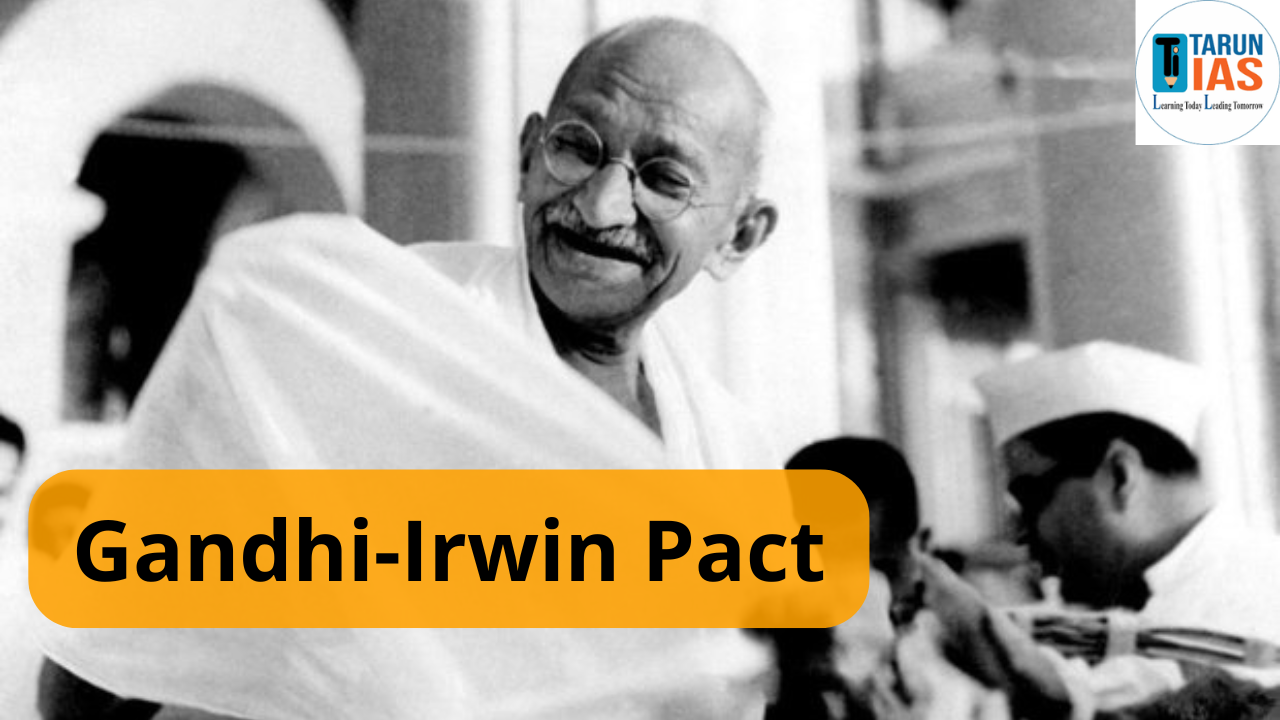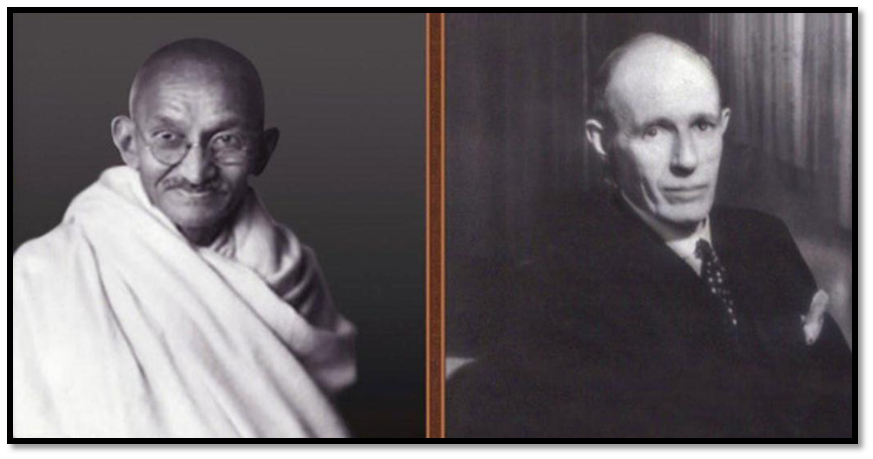Gandhi-Irwin Pact, signed on 5th March 1931.it was an agreement between Mahatma Gandhi and Viceroy Lord Irwin to end the Civil Disobedience Movement. Basically the Gandhi-Irwin Pact milestone in India’s fight for independence.
This agreement marked the end of the first phase of the Civil Disobedience Movement and was a result of increasing national and international pressure on the British government.
Gandhi-Irwin Pact Background
India was ruled by the British for 200 years. During this time, many policies and laws were made to benefit the British government at the expense of Indian interests.
Salt Satyagraha
- One such law was the Salt Law. Salt was a basic need of every Indian family. But the British imposed heavy taxes on salt and stopped Indians from making salt. This anger people across the country.Mahatma Gandhi believed in non-violent protest.
Civil Disobedience Movement
- In 1930, he launched the Civil Disobedience Movement, beginning with the famous Salt March. He and his followers walked from the Sabarmati Ashram to Dandi, a coastal village in Gujarat, and covered a distance of about 240 kilometers in 25 days. There, Gandhi broke the salt law by making salt from seawater. This small act became a symbol of ban against British rule.
- The Salt Satyagraha inspired millions of Indians to join the movement. People across the country began to peacefully violate British laws. Many people were arrested, including Gandhi himself. The British government was now under global pressure as newspapers around the world reported on the peaceful protests and the tough actions of the colonial rulers.
Gandhi-Irwin Pact Requirement
The British Viceroy Lord Irwin felt that the situation was getting out of control. The Civil Disobedience Movement was growing stronger every day. Meanwhile, the First Round Table Conference held in London in 1930 failed because the Indian National Congress did not participate in it. Without Congress, no constitutional discussions could move forward.
To ensure the success of the Second Round Table Conference, Lord Irwin wanted to involve the Congress. For this, he needed Gandhi and other leaders out of jail. Hence, the British government began secret talks with Mahatma Gandhi while he was still imprisoned. Eventually, Gandhi was released and held multiple meetings with Lord Irwin in February and March 1931. These meetings led to the signing of the Gandhi-Irwin Pact.
What was the Gandhi-Irwin Pact?
The Gandhi-Irwin Pact was an agreement aimed at establishing peace between the British government and the Indian National Congress. The British government agreed to make certain concessions, while Gandhi agreed to suspend the Civil Disobedience Movement. It was a political agreement. Both sides sacrificed something to create a common ground. The pact contained many provisions that reflected the changing nature of British-Indian relations.
Gandhi-Irwin Pact Main Provisions
Here are the major terms that were agreed upon in the pact
- Suspension of the Civil Disobedience Movement: Gandhi agreed to stop the Civil Disobedience Movement and all forms of protest against British laws.
- Participation in the Second Round Table Conference: The Congress agreed to participate in the Second Round Table Conference in London.
- Release of Political Prisoners: The British government agreed to release all prisoners who were arrested during the Civil Disobedience Movement, except those who were involved in violence.
- Right to Make Salt: Indians were allowed to make salt for their personal use near the coast. This was a major win for Gandhi as it addressed the core issue of the Salt Satyagraha.
- Return of Confiscated Property: Properties that were confiscated during the movement were to be returned to their rightful owners.
- Withdrawal of Ordinances: The British agreed to withdraw emergency ordinances and regulations that were used to suppress Congress activities.
- Right to Peaceful Protest: Indians were allowed to hold peaceful demonstrations and carry on with their political activities without interference, as long as they remained non-violent.
Gandhi-Irwin Pact Demands Rejected by British
While some demands of Gandhi were accepted, many were not. These included
- Commutation of Death Sentences: Gandhi had requested that the death sentences of Bhagat Singh, Rajguru, and Sukhdev be changed to life imprisonment. Lord Irwin refused this demand, and all three were hanged on 23rd March 1931.
- Inquiry into Police Brutality: Gandhi asked for a public inquiry into the excesses committed by the police during the protests. This was also rejected.
- Complete End to Repressive Measures: Gandhi wanted a total end to repressive laws and ordinances, but the British only agreed to partial withdrawals.
Why Gandhi Accepted Gandhi-Irwin Pact
Many people questioned Gandhi for signing the pact, especially since the death sentences of Bhagat Singh and others were not stopped. But Gandhi had his reasons
- He believed in peace and non-violence. The pact helped stop the violence and repression happening across the country.
- The agreement was a way to keep the Congress active in political discussions with the British.
- Participating in the Second Round Table Conference would give Indians a platform to present their views before the world.
Gandhi knew that the fight for independence would take time. He saw this pact as a step forward in that long journey.
Gandhi-Irwin Pact Reactions
The reactions to the pact were mixed
- Within India: Many Congress leaders supported the pact, but some, especially the younger revolutionaries, felt betrayed. They were upset that the British refused to commute the death sentences of Bhagat Singh and his companions.
- British Conservatives: Many conservative leaders in Britain criticized Lord Irwin for bowing to Gandhi.
- International Community: The pact gained a lot of attention internationally. Many newspapers praised Gandhi’s leadership and the British government’s willingness to negotiate.
Gandhi-Irwin Pact Significance
The Gandhi-Irwin Pact was important for several reasons
Recognition of Congress: The pact officially recognized the Indian National Congress as the main political party of India.
Boost to Non-Violent Movement: It proved that non-violent methods could force even a powerful empire to negotiate.
Gateway to the Round Table Conference: The agreement ensured Indian participation in the Second Round Table Conference, allowing Indian leaders to discuss constitutional reforms.
Global Sympathy for India: The pact and the events leading up to it exposed British repression. This helped build international support for India’s cause.
Inspired Future Movements: Though the pact had its limits, it inspired more Indians to join the freedom movement. It laid the foundation for future campaigns.
Gandhi-Irwin Pact Limitations
Despite its importance, the pact had several shortcomings
- Many demands of Gandhi were not accepted.
- The pact did not guarantee any concrete steps toward Indian independence.
- The British continued their repressive policies soon after.
- The Second Round Table Conference also failed to meet Indian expectations.
Gandhi-Irwin Pact Impact
Gandhi went to London in 1931 to attend the Second Round Table Conference. However, the conference ended in disappointment. The British refused to accept the basic demands of the Congress. Gandhi returned to India disheartened. Soon, the Civil Disobedience Movement was resumed in 1932.
The pact may not have achieved all its goals, but it made the British realize that The Indian National Congress (INC) and Gandhi had to be included in any future political discussions. It also showed the world that India was serious about gaining independence.
Conclusion
The Gandhi-Irwin Pact was a landmark moment in India’s freedom struggle. It reflected the growing strength of the national movement and the ability of Indian leaders to negotiate with the British on equal terms. Though not all demands were met, the pact laid the foundation for future developments, including the Government of India Act 1935.
















